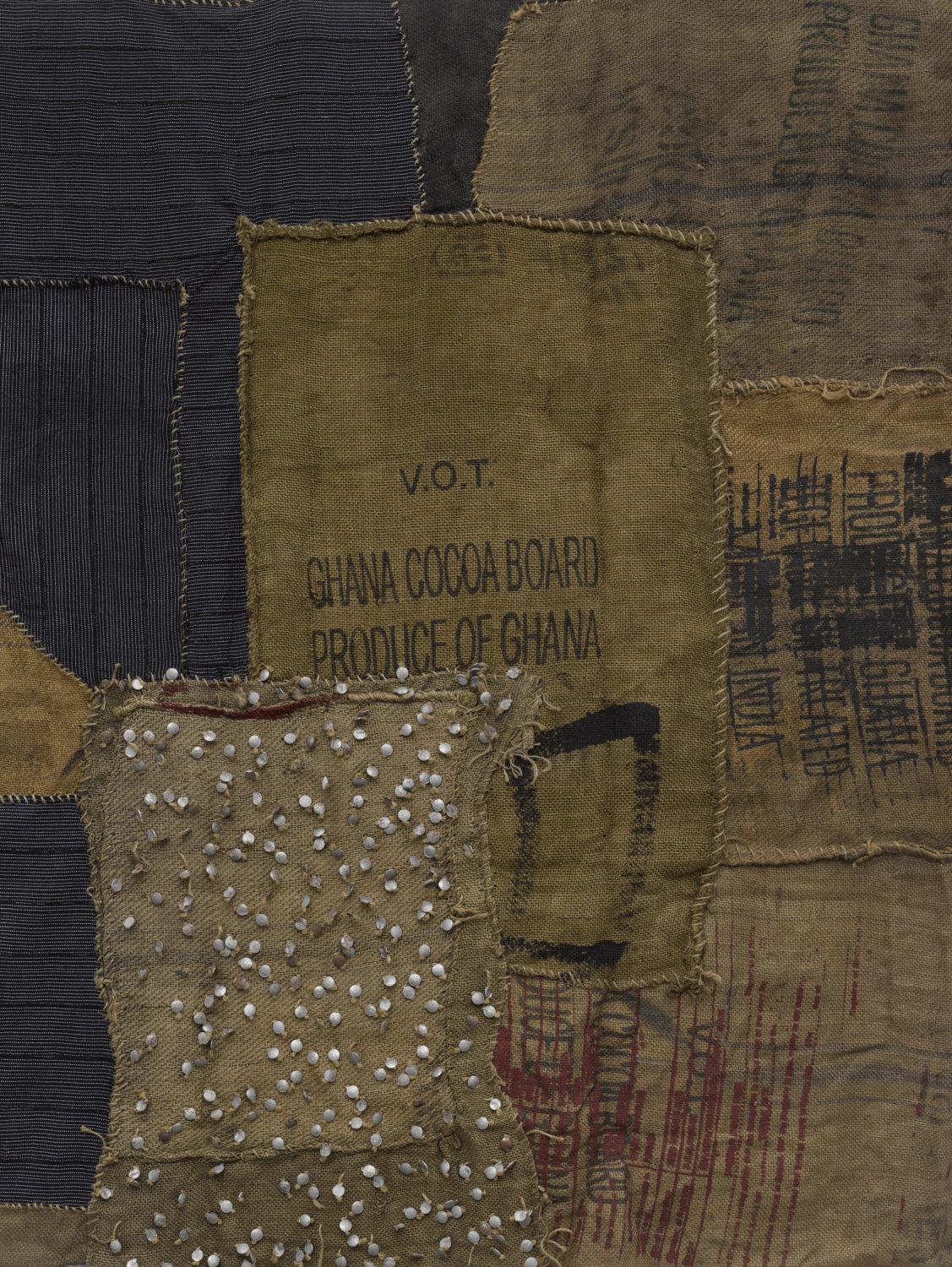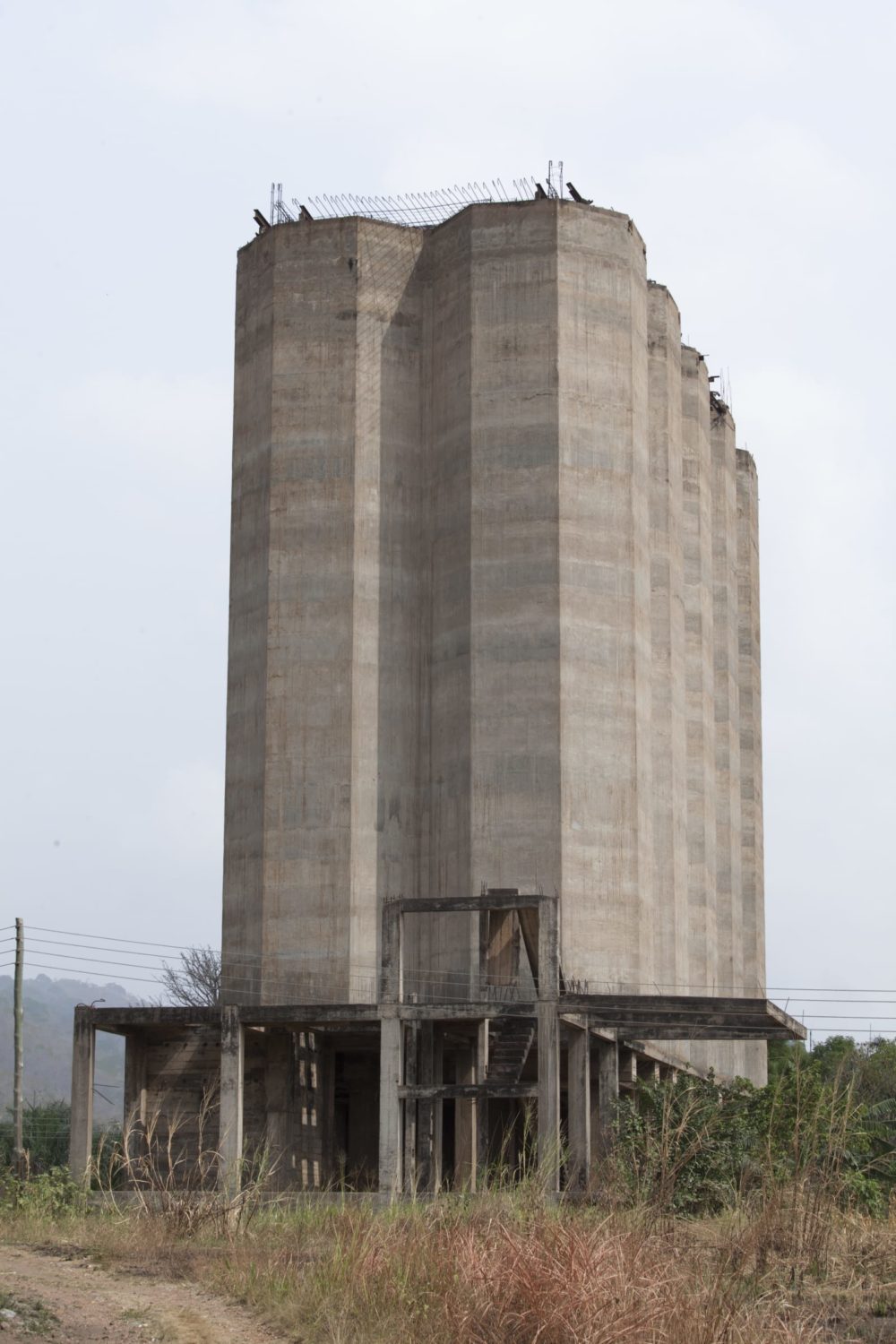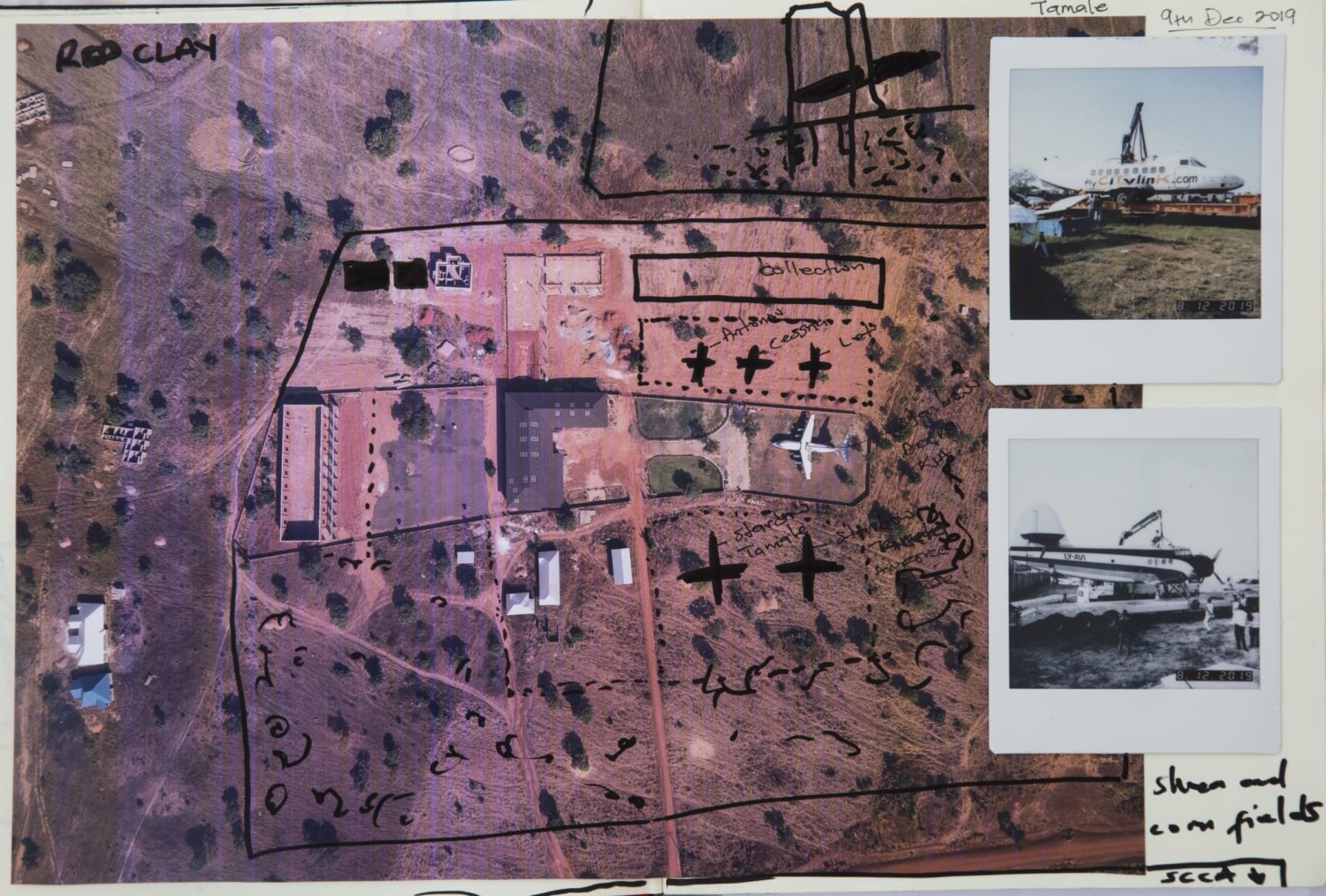Artist Ibrahim Mahama Reimagines The Defunct Buildings Of Post-Independence Ghana
By Something CuratedPresented by White Cube, Ibrahim Mahama’s Letters From the Void, on view online until 17 November 2020, showcases a series of new and recent works by the Ghanaian artist. In his latest series of jute sack paintings, Mahama continues his interrogation of the principle that by engaging with the failures of the past it is possible to ignite new value systems for the future. By so doing, there is the potential to engender economic change that would lead to labour reforms. Produced in his native Ghana with the help of ‘collaborators’, the jute sacks from which the paintings are created, point to histories of trade and commerce and the personal stories of their handlers, having been used to transport the prized Ghanaian cocoa bean, as well as other food staples and natural fuel.

Over the past months, Mahama has been based in the Northern Region of Ghana conducting research into the recent history of its economy of labour. Post-colonial Ghana ushered in an era of economic prosperity and positive political change under the nation’s first elected president, Kwame Nkrumah. The world’s largest producer of cocoa, and a country rich in natural resources, Nkrumah enlisted the help of architects from the Eastern Bloc to build large-scale Brutalist silos which would store maize, grain and cocoa. The aim was to support the national economy by stabilising these commodities on the world market, an economic development plan that would ultimately prove unsuccessful.

“All around Ghana, you will see tall silos built in modernist style from concrete in the late 1950s by the Cocoa Processing Company to store cocoa. They were symbols of the new Ghana’s self-determination,” Mahama tells. Dispersed between the ports of Accra, Tema and rural Ghana, these now abandoned structures act as stark reminders of the hope, as well as the failure, experienced by a whole nation post-independence. Fascinated by the weight of this history, embodied as it is by the crumbling concrete of these structures, Mahama set about acquiring one of these silos in Tamale. Building upon the remnants of hope still lingering following the failure of Nkrumah’s plans, the artist is engaged in transforming the space into a site for the local community, including an exhibition space and educational facilities.

Mahama’s jute sack installations and paintings are often made in collaboration with those who previously worked in these state-owned storage facilities. Imported from Asia by the Ghana Cocoa Board, the sacks are used in the transportation of cocoa beans before being repurposed to carry charcoal, vegetables and other commodities traditionally stored in the state-owned silos. The metal authentication tags of the Ghana Cocoa Board are still found on some of the works, alongside sections of smock fabric commonly worn in the Northern Region of Ghana that have been sewn onto its surface. The life cycle of these various materials is what interests Mahama, containing as they do, the residue of those who have handled them across the years, as well as traces of the commodities they once held.
Central to Mahama’s practice is the concept of the circular economy; this commitment has led him to set-up two multi-disciplinary venues in the Northern Region of Ghana. Set amidst the burnt-umber earth of Tamale, the Savannah Centre for Contemporary Art (SCCA) opened in 2019, and recently hosted its second retrospective exhibition as part of a programme that celebrates the work of Ghanaian artists. Completed during the recent lockdown, its sister organisation, Red Clay, exists as a vast studio complex and cultural repository for hosting artist residencies, film screenings, lectures and workshops.
Feature image: K.N.U.S.T Catholic Church, Site of Production, Kumasi, Ghana, 2016. © Ibrahim Mahama